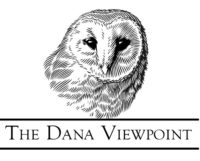Auld Lang Syne – December 2020

Auld Lang Syne
December 29, 2020
Dow: 30,336
The traditional New Year’s Eve song has its origins in Scotland in the late 18th century. It was a song of longing and melancholy for better times past. That can certainly describe the feeling we have all had for most of this year. In the investment world, this time of year usually involves a summary or reflection on the past year as well as a look forward to what the next year may bring. Let’s skip the former.
We look to 2021 with excitement and anticipation. The prospects for a broader return to a more normal economic and social environment are strong. COVID-19 vaccine distribution has begun, but success will not arrive on a given date, it will come over time. The more individuals that gain immunity by experiencing a bout with the virus or by getting vaccinated, the more difficult it will be for the virus to continue its spread. There will be a balance, and precautions will still be needed for a period of time. Expect continued disagreement over the level of precaution that will be necessary, as has been the case throughout the pandemic this year. Nevertheless, risk in any given situation will begin to decrease.
We find many reasons to be optimistic about economic and market prospects for 2021. Housing has been a beneficiary of changes in behavior and outlook during the pandemic. New and existing home sales have skyrocketed, and backlogs at many builders remain high. This building boom is supported by a surge in existing home prices and sales, and by a move in borrowing rates to historic lows. Both new and existing home sales rates are up over 20% since 2019, and prices are up more than 10% this year. An uptrend in home prices supports consumer optimism and future spending.
At the corporate level, inventories have been drawn down to lower levels, and capital expenditures have been cut at many companies to preserve cash through these uncertain times. Both have room to grow to much higher levels in 2021. Both will need to be triggered by an increase in consumer expenditures, but that too could be on the horizon as vaccines are more widely distributed. Weakness in the dollar could add a tailwind to the earnings of multinational companies going forward.
The Federal Reserve has pledged to stay out of the way during the recovery. Fear of the Fed “removing the punch bowl” has tempered rallies in the past. Currently, the Fed is telegraphing rates near zero for at least the next two years, and possibly longer. They also have claimed that they are willing to tolerate a rate of inflation above 2% for an undetermined period of time. This could allow companies to raise prices while still taking advantage of low borrowing costs, resulting in more positive leverage to margins and earnings.
The household savings rate has ballooned during 2020 and could be another source of funds for spending and growth in 2021. Total household savings has increased by approximately $2.5 trillion dollars through the first ten months of 2020. This increase has taken place even as consumers have paid down debt this year. This level of savings has been a net detractor from GDP in 2020 and could be a significant add to GDP in 2021 and beyond.
Regardless of the positives, equities and fixed income markets have moved up significantly in 2020. If we look back to the market correction in 2018, we may find some indication of a potential signal of a market top. One place to look is to those areas of the market that have had the largest moves up over the past year. The S&P 500 peaked on January 26, 2018 and did not show a 10% gain over that level for more than 20 months. Bitcoin peaked on December 17, 2017 and fell 40% over the next five weeks as the S&P 500 continued to rise. The most volatile areas of the market may provide early clues for the next correction.
We thank you for the trust you have placed in us, and please share our best wishes for a happy, safe, and prosperous 2021.
Random thought: Success is a lousy teacher. It seduces smart people into thinking they can’t lose. – Bill Gates

